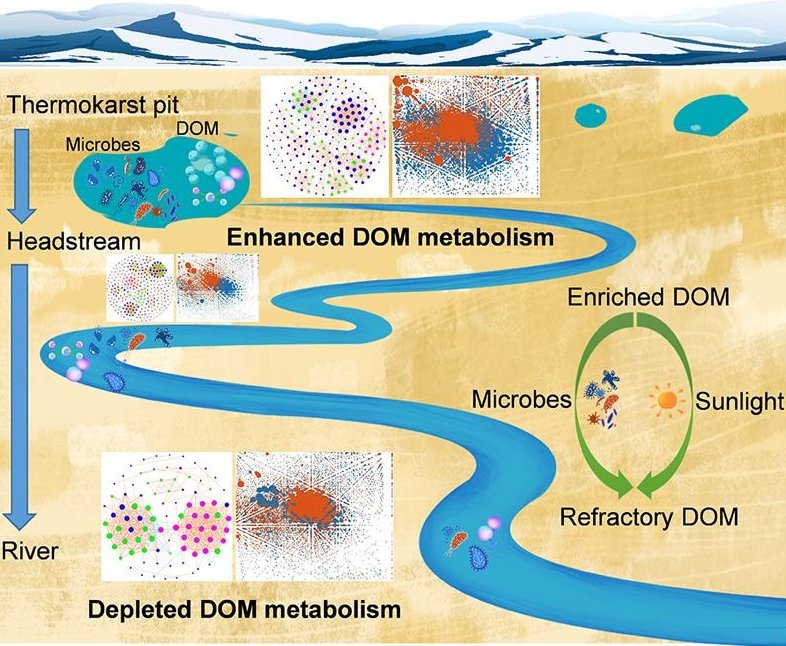Decreasing diversity of rare bacterial subcommunities relates to dissolved organic matter along permafrost thawing gradients.
New publication by Zhou, Lei; Zhou, Yongqiang; Yao, Xiaolong; Cai, Jian; Liu, Xin; Tang, Xiangming; Zhang, Yunlin; Jang, Kyoung Soon; Jeppesen, Erik.

Abstracts:
Dissolved organic matter (DOM) released from permafrost thaw greatly influences the biogeochemical cycles of, among others, downstream carbon, nitrogen and phosphorus cycles; yet, knowledge of the linkages between bacterial communities with permafrost DOM heterogeneity is limited. Here, we aim at unravelling the responses of bacterial diversities and metabolic profiles to DOM quantity and composition across permafrost thawing gradients by coupling an extensive field investigation with bio-incubation experiments. Richness, evenness and dissimilarities of the whole and rare communities decreased from thermokarst pits to headstreams and to downstream rivers. The assemblages of the abundant subcommunities were mainly determined by ecological drift-driven stochastic processes. Both the optical and the molecular composition of DOM were significantly related to the changes of the whole (rare) bacterial communities (Mantel’s correlation > 0.5, p < 0.01). Diversity indices of the whole and rare communities decreased with decreasing relative abundance of tannins, condensed aromatics and more aromatic and oxidized lignins as well as with decreased dissolved organic carbon and intensities of all fluorescence components. Laboratory DOM bio-incubation experiments further confirmed microbial consumption of more aromatic and oxidized compounds as well as decreasing metabolic diversities in terms of microbial degradation and production along permafrost thawing gradients. Our findings suggest that changes in the sources of permafrost-derived DOM induced by global warming can have different influences on the diversity and metabolism of bacterial communities and thus on permafrost carbon climate feedbacks along permafrost thawing gradients.
